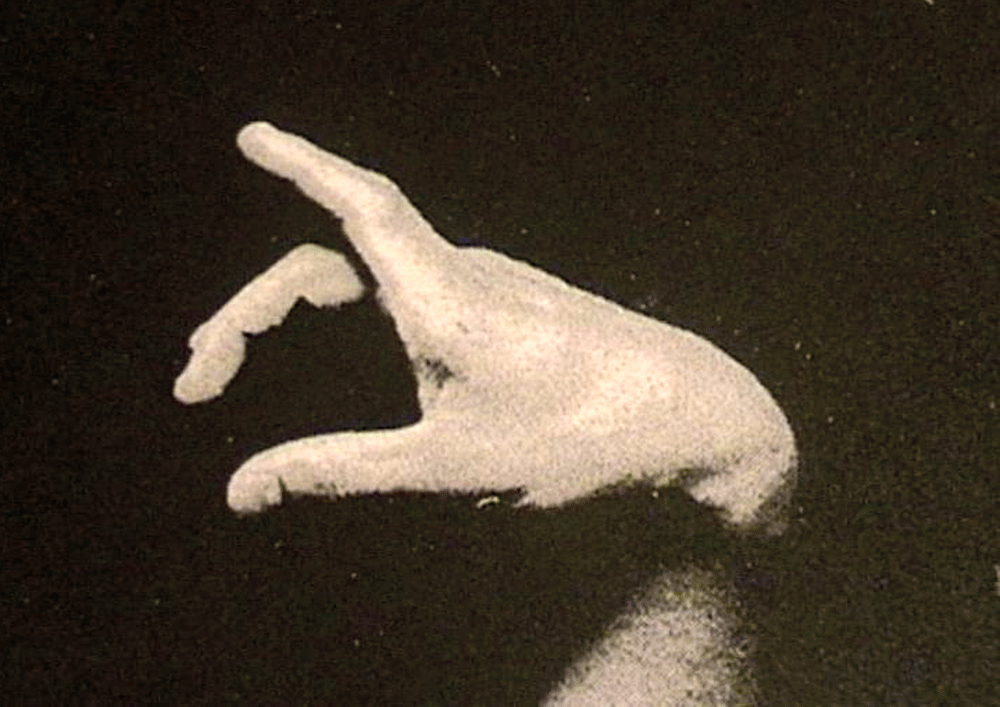James Richards’ Poetry, Politics and Desire
The artist used low-resolution images in installations and curated film programmes
The artist used low-resolution images in installations and curated film programmes

‘The poor image is a copy in motion’, begins Hito Steyerl’s 2009 essay ‘In Defence of the Poor Image’. Citing the rise of the kind of low-resolution visuals now familiar on YouTube as a necessary accompaniment to the digitization of film and the need for easily adjustable formats, Steyerl argues that the versatile nature of the re-sized, redistributed, renamed film clip competes with the supremacy of the high-resolution image found in more traditional settings (the gallery, the cinema). Copied, re-copied and quick to download or to burn, the ‘poor’ representation is small, on the move and feral – a fast-moving guerrilla fighter in the aesthetic war of the pixel.
London-based artist James Richards draws from a broad range of easily accessible images: online clips, other artists’ films, as well as classic features culled from a variety of disparate sources such as the Lux archive (where he was associate artist from 2007–8), Internet streams and television. Continuing in the long tradition of remixing appropriated material (from Scratch video artists, such as Guerilla Tapes and George Barber, to the sampling techniques of early hip-hop producers), Richards’ carefully constructed film installations move past Scratch video methodology to involve sculptural and curatorial considerations.

‘Resolution’, Richards’ 2009 solo show at Swallow Street, London, alluded to both image quality and the sense of completeness that the ever-hybrid reproduction calls into question. Comprising two sculptures and a video installation alternating over two screens a looped version of his four-part video The Misty Suite (2009), the exhibition presented a sculptural, minimal deftness that belied its appropriated content. A shelf supporting an assortment of books all bearing the same stock imagery of flames on their covers, and a two-metre-high stack formed of copies of A Woman In Your Own Right: Assertiveness and You (1982) – a self-help book by Anne Dickson, which Richards remembers his mother owning – which were bought by the artist on eBay over a number of months. You could see your reflection in the cover of the Dickson book, framed by the title – it’s the kind of wry humour that pervades Richards’ work.
For his current show at Tate Britain (reputedly the last ever exhibition in their ‘Art Now’ series), Richard’s four-channel, call-and-response video Call and Bluff (2009) plays The Misty Suite in between shots shown on the facing three monitors from an instructional video about studio lighting that the artist found in a charity shop. The three separate shots of a man, who looks like a young Oscar Wilde, stare expressionlessly out of the monitors. In The Misty Suite Richards links three very different films by their similar zoom speeds: a shot of a young Brooke Shields in Nightmare on Elm Street (1984), falling asleep in class; a girl drawing an eye in an instructional video; and nebulous star clusters in outer space. ‘Bear down, breathe’, intones a voice (taken from a recording of an experimental poetry recital). As well as the technical observations of the camera speeds and lighting setups in Call and Bluff, political and libidinal associations emerge and fade throughout Richards’ early film Untitled (Cinema Programme) (2006), in which a home recording of a father pulling his son out of a swimming pool switches to a slow-motion shot of British comedian (and disgraced television presenter) Michael Barrymore elaborately falling down on stage. These clips are layered with an Arvo Pärt composition, Passus (1982), reworked by Richards on synthesizer and a friend on cello.
Adapting his own film material into different installations and configurations, you see the same references repeated in Richards’ films, as though he was drawn back to certain shots like a landscape painter returning to a favourite location. For example, for Disambiguation (2009), his collaboration with Canadian artist Steve Reinke, parts of The Misty Suite are re-edited so as to generate new meanings. Similarly, the instructional video on studio lighting that was used in Call and Bluff was previously seen in ‘Active Negative’, the film programme which Richards organized for his show at London’s ICA as part of ‘Nought to Sixty’ in 2008. Indeed, aside from producing his own video installations, the artist has curated a number of film programmes (for Light Industry in New York, Tramway in Glasgow, FormContent in London and, this month, an evening of 16mm film for the Serpentine’s ‘Park Nights’ series). He also designed the viewing platforms for ‘Infermental’, an exhibition of the eponymous 1980s video-based magazine project at Focal Point Gallery in Southend-on-Sea this summer.
Richards’ video work locates natural harmonics and emotional attachments between curious fragments of source material. By working and re-working throwaway samples – YouTube clips, unremarkable scenes from films, looped incantations – his meditative practice inscribes the personally held into the publically accessible, salvaging spaces of reflection amidst the ever-moving and ever-increasing sea of poor images.
























